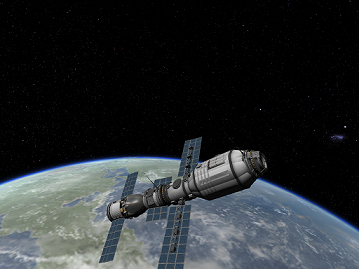Chinese space experts have developed the third-generation rendezvous and docking CCD optical imaging sensor, considered to be the world's most sensitive "eye," which would allow two spacecraft, traveling at various speeds, to make an autonomous rendezvous and dock more efficiently and safely, the Xinhua News Agency reported.
According to China Academy of Space Technology (CAST), the new CCD optical imaging sensor, dubbed the "eye," will be used on China's second orbiting space lab, Tiangong-2, the Chang'e-5 lunar probe and the permanent manned space station.
Tiangong-2 is planned to be launched in 2016, while Chang'e-5 will be sent to the moon to collect samples and return to earth around 2017. China also plans to put a permanent manned space station into service around 2022.
"Good 'eyesight' is crucial for one spacecraft chasing another for hundreds of thousands of kilometers to achieve a perfect rendezvous and docking--it's like threading the needle," Gong Dezhu, a CAST designer who worked on the CCD optical imaging sensor, said.
"The last 150 meters between the two spacecraft is the most critical moment. A slight deviation during docking might lead to a disaster like the one caused by Mann, the main antagonist in the movie Interstellar," Gong added.
The new "eye" also has a clearer vision under direct sunlight, compared with the CCD optical imaging sensor used in the docking of Tiangong-1 and the Shenzhou spacecraft, which is crucial to the safety of a docking spacecraft.
Gong said that the window period of the docking process will be twice the length, but the reaction time "between the 'eye' capturing the first sight of its target and recognizing it has been shortened from 10 seconds to less than one second."
According to Gong, the sensor is 50 percent lighter and its power consumption is only half, compared to other international products.
Experts said that the new CCD optical imaging sensor can also be used on mechanical arms, and also for repairing and refueling spacecraft, as well as aerial refueling and docking of underwater vehicles.



























